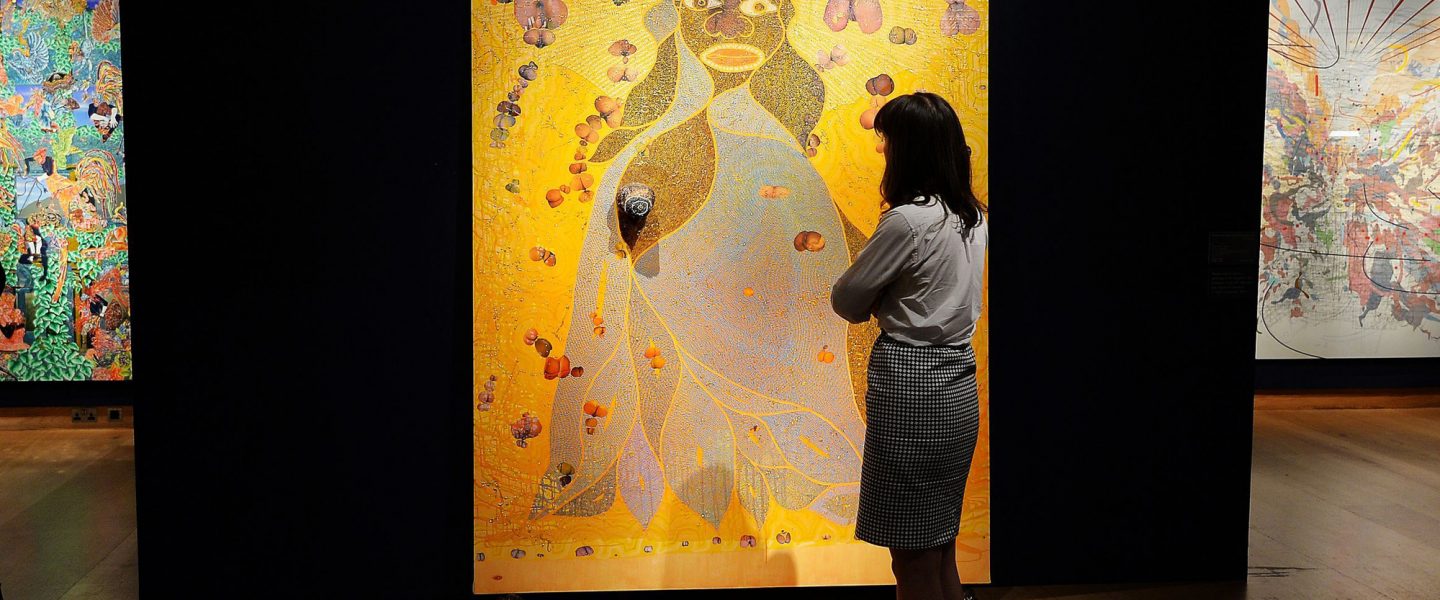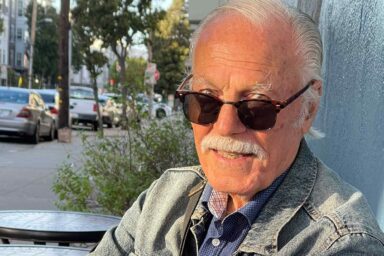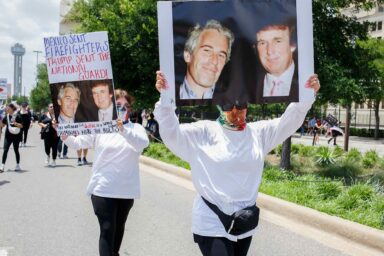Tear up those lanes!
|
Listen To This Story
|
When I was growing up we got a lot of things wrong. Our museums left out minority artists, our publishing houses overlooked disparate voices, our film studios refused to cast enough people of color, or with disabilities, or who were transgender. There weren’t enough female film directors or Black editors.
The power structures of the Artistic Industrial Complex (what are sometimes creepily called “content providers”) are trying to redress that imbalance by putting in express lanes for formerly underrepresented segments of our society, in publishing, film, television, music, theater, museums. Maybe it’s not fast enough for your liking, but it’s happening.
But along with those express lanes, they’ve put in restrictions on what those artists can produce. They want them to stay in their appointed lanes.
The result is that lately we’ve been diminishing our own artistic enjoyment.
It’s like that joke in (sorry) Woody Allen’s Manhattan, when a young woman says, “I finally had an orgasm, and my doctor said it was the wrong kind.”
That seems to be the key joke missed in today’s culture. We’re bottling our own creative libidos, stopping up our earthquake machines, by putting blinkers over our eyes, plugs in our ears, and gags in our mouths.
Here’s my manifesto in one sentence:
Any audience/reader should be able to be affected by anything created by anyone.
If a straight actor wants to play a gay character, let him. If a trans actor wants to play a straight character, let them. If a white writer wants to write a book about Hispanic culture, go ahead. If a Black playwright wants to write about Alaskan Natives or German expressionists or the Teapot Dome scandal or the Beatles, that’s dandy-do. This isn’t complicated.
Either the project works or it doesn’t. But don’t reject it on the basis of its creator’s or performer’s race, color, sex, sexual orientation, or gender identity.
We’re just itching to be offended by everything.
This even goes for the art we’ve inherited. Picasso has been recently taken to task for his interest in African sculpture, which influenced some of his early work. The Guardian has described it as part of his “troubled legacy.”
A Philip Guston exhibit was postponed for two years over confusion about the white, hooded figures in some of his work, “which leaders at the institutions feared might be misunderstood by audiences,” according to ArtNews.
In 1999 Mayor Rudolph Giuliani removed a painting of the Virgin Mary by Black British artist Chris Ofili from the Brooklyn Museum because he considered it offensive to Catholics. People decried his action, but now some of those same people are trying to remove art from the public sphere.
The artist Dana Schutz saw calls for her painting Open Casket, depicting Black lynching victim Emmett Till, to be removed from the 2017 Whitney Biennial because she’s white.
Perhaps the most moving song ever written about lynching was “Strange Fruit,” made famous by Billie Holiday in 1939. It was written by a man named Lewis Allen, born Abel Meeropol. He’d been repulsed by a photograph he saw of two men being lynched in Marion, IN, in 1930. No one told him he was songwriting in the wrong lane. He was Jewish.
A British-born artist and writer named Hannah Black declared, “It is not acceptable for a white person to transmute Black suffering into profit and fun, though the practice has been normalized for a long time.”
Schutz told the New Yorker, “You think maybe it’s off limits, and then extra off limits. But I really feel any subject is O.K., it’s just how it’s done. You never know how something is going to be until it’s done.”
Critics of Schutz’s right to this subject matter were essentially saying that it is not acceptable for an artist to express their emotional reaction to a historical atrocity, declaring that a white person can’t legitimately express disgust and sorrow at an act of human barbarism.
Perhaps the most moving song ever written about lynching was “Strange Fruit,” made famous by Billie Holiday in 1939. It was written by a man named Lewis Allen, born Abel Meeropol. He’d been repulsed by a photograph he saw of two men being lynched in Marion, IN, in 1930. No one told him he was songwriting in the wrong lane. He was Jewish.
When Jeanine Cummins, a white woman of non-Mexican heritage, wrote a novel about Mexican immigrants in American Dirt (2020), it was almost shot down by a single social media campaign started by Myriam Gurba, a Latina writer who didn’t just hate the book, she declared that the author had no right to even write it.
Eventually the novel, which had been chosen by Oprah Winfrey for her popular book club, found its footing and went on to become a bestseller, selling over 3 million copies worldwide and being translated into 37 languages.
But the social media campaign that initially damaged it (the author and her editor received death threats) has metastasized to produce a chilling effect on the industry, not only discouraging editors from acquiring books written outside of an author’s experience, but also causing writers to censor themselves.
In a recent article in The New York Times, Pamela Paul reported that “a number of novelists — from all backgrounds and ethnicities — told me privately they were afraid the rage would come for them, for earlier novels they’d written in which they’d imagined other people’s lives, other people’s voices.”
America has traditionally welcomed lane-changing traffic, but now the Highway Code has been rewritten. Historically there’s a lot of cross-fertilized work you could criticize if you insist on being culturally doctrinaire.
For instance, what right did the Russian-born Lewis Milestone have to direct All Quiet On the Western Front (1930), adapted from the famous German novel? The Hollywood production told a story from the German side of the First World War.
How dare the German director Fritz Lang make a Hollywood film about a lynching (Fury, 1936)? How dare WASP writer John Updike create the Jewish writer Henry Bech, chronicling his foibles in three novels (1970–98)? How could the Jewish Philip Roth write about a Black man who passes as white in The Human Stain (2000)?
These are all acts of creative minds reaching out to imagine lives beyond their immediate experience.
 Can a Black artist discourse on the Holocaust? I certainly hope so. Once we start legislating empathy, we’re on the road to irreparable separation, our culture ghettoized.
Can a Black artist discourse on the Holocaust? I certainly hope so. Once we start legislating empathy, we’re on the road to irreparable separation, our culture ghettoized.
No single race or color has a corner on the market of freedom of expression, but authorities are making this expression increasingly difficult.
Florida is banning books that the governor and his simpatico henchmen deem too transgender- or gay-friendly. The legislation has been nicknamed “Don’t Say Gay,” but there’s a pervasive attitude on the other side of the political spectrum that says Don’t Say Anything That Might Possibly Offend Someone at Some Point Ever.
Not just the words that are meant to offend, but the words that might possibly be misconstrued if you’re trying really hard to be offended.
George Packer has reported in The Atlantic that words such as “urban,” “vibrant,” “hardworking,” and “brown bag” are being culled for their “subtle racism.”
All these have been rejected by something called “A Progressive’s Style Guide,” which has been adopted by such organizations as the Sierra Club, the American Cancer Society, the American Medical Association, and the Columbia University School of Professional Studies, among others.
“Y’all” replaces the patriarchal “you guys,” and “elevate voices” is to substitute for “empower.” Even the word “felon” is to be replaced by “justice-involved person.” My above use of “ghettoized” would not be tolerated.
Enough with this lexicide and Word Destruction Machine. These new draconian diktats weren’t created by writers, they were made by anti-writers.
I say phooey to that. Anyone should be able to create anything, anywhere — all at once.
—
J.B. Miller is an American writer living in England, and the author of My Life in Action Painting and The Satanic Nurses and Other Literary Parodies.




